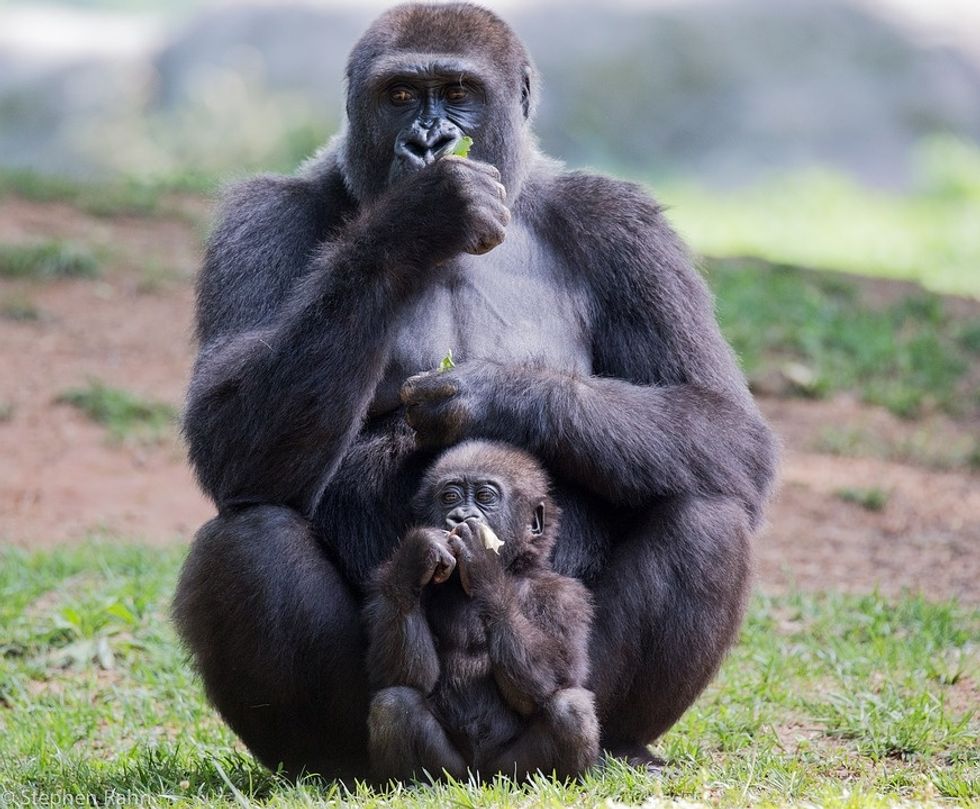As many of you know, apes and many species of monkey share over 96% the same DNA with humans. Comparatively, we share approximately 90% of our genetic structure with cats. A fruit fly has about 60% similarity. Many plants share 10-50% of us.
A new technology of genetic mapping, The Genome, provides earth-shattering evidence supporting evolution theory. There is no coincidence that humans and animals have so much in common—humans are animals. We are descendant from a primary ancestor who contained the smallest amount of DNA live. The difference—in which we sometimes forget, is that humans have a more complex, highly cultivated socio-culture that supports a large, dominating population. What sets us away from other animals isn't necessarily a matter of intelligence or importance. Many animals are much smarter then they'll ever let on. Just because an animal doesn't speak your language, that does not mean they do not speak.
Dedicated scientists and animal lovers over the last 50 years have uncovered shocking truths about the abilities of great apes, who are the closest biologically to humans. It is important to note that there are skeletal remains of early humans found, whose morphologies resemble varying degrees of hybrid ape and human. These bipeds (two-legged walkers as opposed to quadruped apes) have all “phased out" over 4 million years to make way for the modern homo Saipan (Saipan). This means that apes are much like us if only we'd take the time to understand them. Apes have been known to harpoon fish, use rocks to crack open oysters, rescue children, perform rituals, nurture dying birds, and mourn their dead. In my mind, there is no denying that's these lifeforms have genuine feelings, communities, hopes, dreams, and fears and they deserve respect.
What makes matters worse is that knowing that these animals feel things the way humans do does not stop humans from testing aesthetically and medically on monkeys. The theory is doctors and product testers test on primates because they respond biologically and emotionally about the same way humans do to pain and manipulation.
When given the opportunity, apes learn things quickly. For example, after Chantek the Orangutan was taught sign language, she — without prompting, taught her adopted son too. Like humans, many animals have different capabilities when it comes to complex brain function. Even within a species, neuroplasticity and mental potential vary greatly person to person. For apes, it is not that they don't possess the ability to learn to speak human language, it is they do not have the physical vocal chord structure to support human speech patterns.
Koko, the Gorilla was able to learn over 1,000 signs, while another picked up 600. Unfortunately, Koko passed away last year. She lived a happy life full of learning and love. We can learn a lot from what we can observe from Koko.
Koko Amazing Talking Gorilla - Befriends kitten & gorilla (recounts death of mother by poachers)YouTube
“Koko learned sign language at a pace that paralleled language acquisition by human children. Her most rapid gains in new vocabulary occurred between years 2.5 and 4.5, as compared with human children who spike between 2 and 4 years. Koko learned over 200 new ASL signs in her 3rd year, and while her rate of learning tapered off (as it does for humans) she has continued to acquire new signs year after year, and her current vocabulary exceeds 1,100 signs. Koko's younger male companion, Michael, learned over 600 signs at a similar pace, and the two gorillas had the additional benefit of being able to improve their skills by communicating with each other."
Not only can these apes speak our language, but they also form genuine permanent relationships and long-lasting memories of people, places, and things. Apes can have a favorite stuffed animal even. Chantek was known for bargaining for cheeseburgers. He quickly learned that coins were exchanged for food, so he worked very hard to obtain coin like washers to pay for his meal.
The Smithsonian recounts:
“The Zoo Atlanta press release states that Chantek voluntarily used sign language to communicate with his caregivers, with whom he developed "close personal bonds." Chantek could be shy around humans he didn't know, but he enjoyed playing with the other orangutans at the zoo—particularly a 10-year-old male named Dumadi, who was often seen at Chantek's side."
Many apes born in captivity respond differently to being taught human language skills than captured apes. Captured apes have grown up in a culture where they have their own freedoms and their own language — and being forcibly taught a new way of life isn't an ideal learning environment. Apes are people too, in a way.



 Photo by
Photo by  Photo by
Photo by 
 Photo by
Photo by 



















